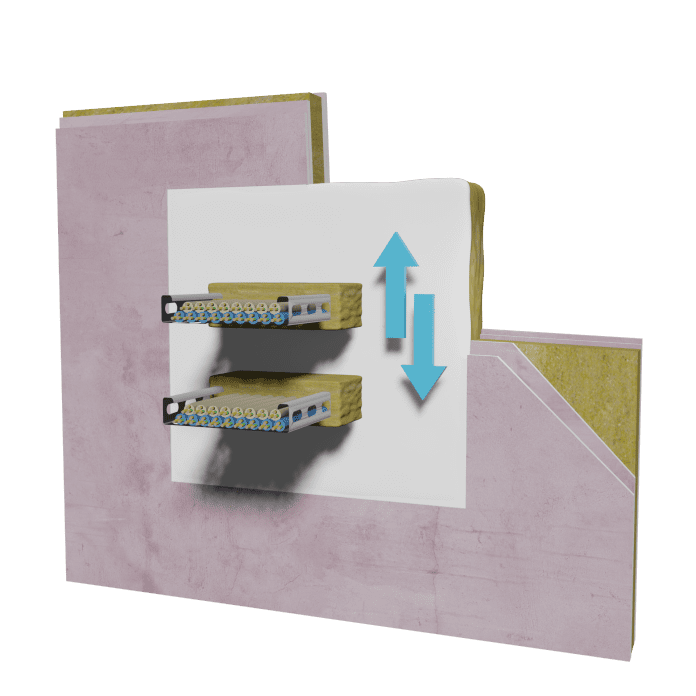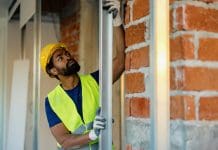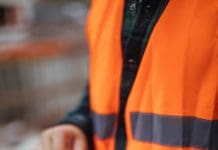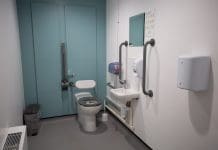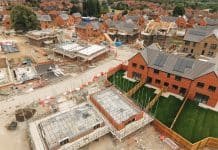John Gardner, national specification manager at FSi Promat, looks at how deflection and movement can affect fire stopping – and how to address it
Fire stopping is integral to passive fire protection systems, ensuring that compartments designed to contain the spread of fire for a set amount of time are sealed at the joints and reinstated once service penetrations are installed.
However, it is also essential to ensure that where building deflection and movement has been identified this is also accommodated in the design of the passive fire protection systems – if not, these vital seals could crack or pull apart and become non-compliant.
As passive fire protection in buildings above 18m now needs to be specified at the earliest stage to progress through the gateway system under the Building Safety Act, it is important that services and the fire stopping seals are part of that – and that any deflective movement is factored into the design to ensure compliance.
Deflection is the degree to which sections of structural elements of a building are deformed under a load. Movement in fire stopping is the amount that services could move because they are attached to these deflective elements.
It is essential to know at the design stage for passive fire protection systems whether a building will have deflection. If there is a requirement for movement this is a fork in the road in terms of planning fire stopping and the design needs to build in that flexibility and allow movement for partition joints and service apertures.
Where is deflective movement a problem for passive fire protection?
When taking an overview of buildings and the impact deflective movement can have, the point at which flexible walls meet rigid ceilings and floors is a major area of consideration. Principal designers will factor this into a building’s structure by adding a deflection head to accommodate movement where needed.
It is important that the movement built into the wall is also accommodated in any fire stopping used. Where fire stopping is used to seal the join between a wall and ceiling, or floor, it is vital that it supports the required flexibility.
To this end, a flexible fire stopping system should be used in line with EN1366-4; this needs to be able to demonstrate the level of flexibility demanded by the building.
Any linear gap seal used must accommodate the movement or it will risk cracking under the forces of sheer, extension and compression as a result of loading, settlement or wind load.
Spacing service penetrations
Along with partition joins, service penetrations also require fire stopping to ensure compartmentation remains intact. Where multiple service penetrations need to be made into fire resistant compartments to allow for pipework and cabling, for example, movement must be considered.
The spacing between the apertures and the edge of the substrate needs to be adequate to accommodate any movement identified without affecting the structural integrity of the wall and passive fire protection.
To remain compliant with the tested standards for service penetrations in line with EN1366-3, apertures need to take into account separation distances and the distance between the service to the substrate – with all distances to the edge of the aperture needing to be four times the deflection. Having an accurate figure on the level of movement is essential to ensure there is adequate space for planned services.
While a three-sided aperture will be touching the floor above, making the need to accommodate movement clear, a four-sided aperture, even if it not touching the adjoining partition, will still need to accommodate movement as any service will ultimately be connected to the deflection head, either through a steel bar connected to a support device, such as a pipe support or a cable tray.
The only established way around this, other than building flexibility into the fire stopping system, is using a spring-loaded support, which is expensive to install and, as a result, rare.
While tested solutions exist for fire stopping in linear joints, and therefore dictate the standard that needs to be met, fire engineers also need to consider the impact of movement on penetration seals – where there is no formal testing mechanism in the existing standards.
While movement is accommodated in the distances between services, to remain compliant and offer an adequate level of lifetime passive fire protection as set out in Building Regulations Approved Document B (fire safety), movement should also be accommodated in the penetration seal to support best practice.
While a tested solution does not exist for movement in penetration seals, to ensure lifetime compliance, flexibility should be built into fire stopping in buildings subject to movement to accommodate that.
Deflective movement also needs to be considered at the slab edge where flexibility again needs to be built into fire stopping to accommodate any movement with the façade. While open state cavity barriers by their design allow for some movement, this should be a consideration where closed state cavity barriers have been specified.
How to accommodate movement in fire stopping
To meet the demand for a flexible fire stopping solution, FSi Promat has developed a specialist system: Flexi-Coat – a flexible, ablative coating that can be applied to stone/mineral wool backing materials, is also available as a pre-coated mineral wool ready-made solution.
“When taking an overview of buildings and the impact deflective movement can have, the point at which flexible walls meet rigid ceilings and floors is a major area of consideration.”
Flexi-Coat fingers are made up of 80kg mineral wool with a lamella core to provide enhanced flexibility, while the Flexi-Coat coating applied to them is able to flex and mould to accommodate this.
Built up vertically, the blocks of mineral wool can be adapted to meet the different movement requirements of fire stopping linear joints (EN1366-4) and penetration seals (EN1366-3), as well as curtain wall and perimeter façade applications (EN1364-4). This can be used across a range of applications to build flexibility into fire stopping, including in penetration seals.
To accommodate the fact that there was no formal route available to approve the solution for penetration seals, FSi Promat successfully tested Flexi-Coat under the EN1366-4 standard for linear joints. This was followed by a technical assessment that applied an established fire engineering rationale and judgement, carried out in conjunction with a UKAS-accredited third-party certification body, to confirm Flexi-Coat’s extension, compression and shear movement capabilities when applied as a service penetration fire stopping system.
While flexible fire stopping systems can be used in rigid systems, the reverse is not the case – flexibility needs to be clearly accommodated with a tested solution where it has been identified as an issue.
Through early specification of passive fire protection manufacturers can support fire engineers and specifiers to ensure the correct level of flexibility is accommodated into fire stopping systems to ensure accurate specification from the earliest point of a project.
*Please note that this is a commercial profile.


